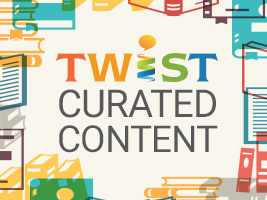Curated Industry Content for the Week of 11/16/15
 Every Monday we curate a number of articles and blog posts that have relevance to members of the eLearning Guild Community, and to the learning and performance field as a whole. Each piece of content that we share includes a brief introduction from the member of the Guild Community sharing why they think the content is important.
Every Monday we curate a number of articles and blog posts that have relevance to members of the eLearning Guild Community, and to the learning and performance field as a whole. Each piece of content that we share includes a brief introduction from the member of the Guild Community sharing why they think the content is important.
Here’s the content for this week:
An Industry Remembers Jay Cross
This past week the Learning and Performance industry lost one of it’s longtime advocates, Jay Cross. Jay was a strong proponent of the power of real learning, and someone whose work has greatly impacted our field over the last few decades. This post collects the many reflections on Jay that have been shared by others around the industry. -David Kelly
How the Internet of Things is Changing Work by David Lamb
“The challenge is to connect everything without losing human interaction—that old chestnut of having people around the table but they’re all staring at their smartphones. Yen’s task as a designer is to avoid that isolation and humanize technology, using it as a way to get teams together and preserve the human feeling of teamwork, even if they’re not physically together.” -Bill Brandon
Credentialing Programs Keep Companies Competitive by Kimo Kippen and Michael Johnson
What role does credentialing play in workplace training? This is a growing question in our industry. This article explores two examples of credentialing in practice from UPS and Hilton. -David Kelly
The L&D world is splitting in two by Jane Hart
The Two-World Theory of Workplace Learning — Critiqued! by Will Thalheimer
These two posts are shared in the context of “Point” and “Counter-Point”. Jane Hart shared an opinion on the two worlds of L&D. The post ignited many responses, both supporting and challenging the post. The second post is from Will Thalheimer, who challenges some of the ideas Jane shared. I share these posts both for their individual content, and as a reminder that things are not always as black and white as we’d like them to be. Often the truth is in the gray space, if we are open to exploring it. -David Kelly
Mobile, IoT Top List of CMOs’ Most Important Future Technologies via Marketing Charts
“CMOs around the world believe that mobile solutions (64%) and the Internet of Things (62%) will be the most important technologies in the next 3 to 5 years, per results from IBM’s latest Global C-suite study. That marks a slight difference from the rest of the C-suite, as the other titles surveyed each placed cloud computing within their top-2 future technologies.” Note that what the CMOs were rating was the impact of technologies on Marketing departments, i.e., what will they be paying attention to, chattering about, etc. But the fact that in the C-suite as a whole mobile, cloud computing, and IoT were right at the top of mind is important. -Bill Brandon
How to Use 360 Video with Goofy! Via Walt Disney World
Star Wars: The Force Awakens Immersive 360 Experience
The phrase “interactive video” is used often, but there are considerably less examples of what that means. One of the most interesting examples I’ve seen has actually been on facebook. They recently started showcasing 360 degree videos that enable you to explore a video as if you were sitting right in the middle of it. Exploring examples like these are important as we consider the possibilities of interactive video for learning and performance support. -David Kelly
Infographics that work Pinterest Board by Niall Gavin
There’s a growing interest in the use of infographics for learning. But what makes a good infographic? Like most things, understanding infographics is easier when there are examples to explore. Niall Gavin has curated a growing list of infographics on, appropriately enough, a Pinterest board. It’s definitely worth checking out. -David Kelly
What are you reading?
If you have an article, blog post, or other resource that you think we should consider sharing in a future Curated Industry Content post, please feel free to send a link to the resource to David Kelly along with a few sentences describing why you think the resource is valuable.

Leave a Reply